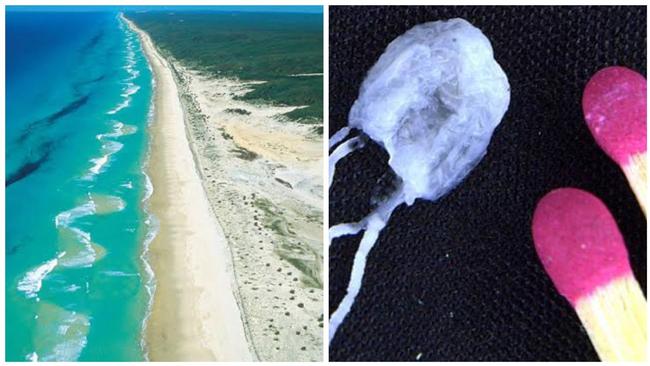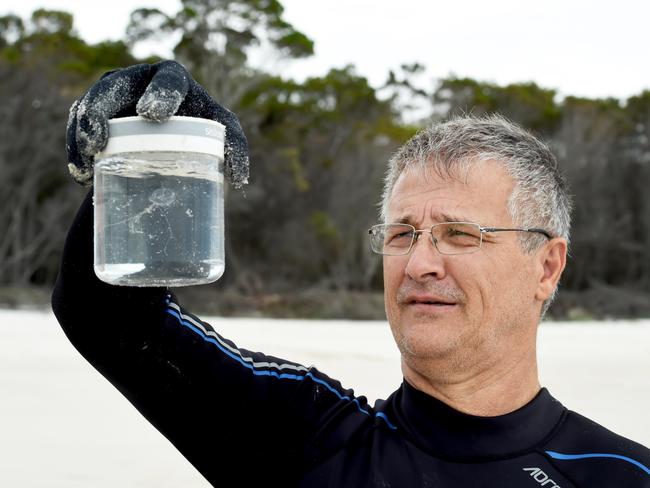‘No test’: Why mystery surrounds spate of suspected Irukandji stings on Fraser Island
Five children have been airlifted from Fraser Island with suspected Irukandji stings in recent weeks. But now a health service has revealed why it can’t confirm that diagnosis.
Fraser Coast
Don't miss out on the headlines from Fraser Coast. Followed categories will be added to My News.
The Wide Bay health service has revealed there is no way to conclusively confirm whether five different marine sting incidents on Fraser Island in recent weeks were inflicted by the potentially deadly Irukandji jellyfish or not.
On Saturday a young girl was flown off the island after a suspected Irukandji jellyfish envenomation.
The primary school-aged girl is believed to have been swimming in the ocean near Bowral Creek when she was stung on her lower back and leg.
It’s the latest in a string of envenomations on the western side of the island over the Christmas holidays; three young girls were suspected to have been stung by the jellyfish on December 27 and a young boy was stung on December 28.
All of the children had to be flown to Hervey Bay Hospital.
Irukandji are known for their small size and highly venomous sting, which often leads to hospitalisation and can be fatal.

A spokeswoman for the Wide Bay Hospital and Health Service said she that due to privacy regulations she could not comment on the specifics of the cases in question, but that treatment for marine stings varied on a case by case basis.
“There is no swab or blood test to confirm an Irukandji sting. Doctors will make a clinical diagnosis based on the patient’s symptoms,” she said.
“Doctors will consider things such as onset of symptoms, presence of marks where tentacles have made contact, severity of pain, nausea and vomiting, increased heart rate and blood pressure.
“On rare occasions, some people with an Irukandji sting, especially those who are older or who have underlying conditions, may experience more severe symptoms such as difficulty breathing, shooting pain, particularly in the chest, and damage to the heart or lungs.
“Patients are monitored and usually only need pain relief and are discharged within a day, if they require inpatient care at all.
“In more severe cases, further monitoring and appropriate treatment is given.
“There are other marine stingers that can cause similar symptoms, and doctors will make a diagnosis based on the specific case and treat the patient accordingly.”

Last week, Professor Jamie Seymour from the Institute of Tropical Health and Medicine Cairns said more research needed to be done into the spread of the animals.
With more Irukandji now being found in waters along the southern Queensland coast, he called for more funding to be provided by the State Government.
“I mean, we would drop everything tomorrow and come down and work ourselves stupid down there if we could find research funding to do it,” he told the Chronicle.
“But we can’t. As a result, nothing happens.”
Mr Seymour fears it will take a tragedy to change things.
“I hope that nobody ever gets in a situation where they are in a life-threatening position from an Irukandji sting, but I have to say that it is going to happen at some stage down there.”




